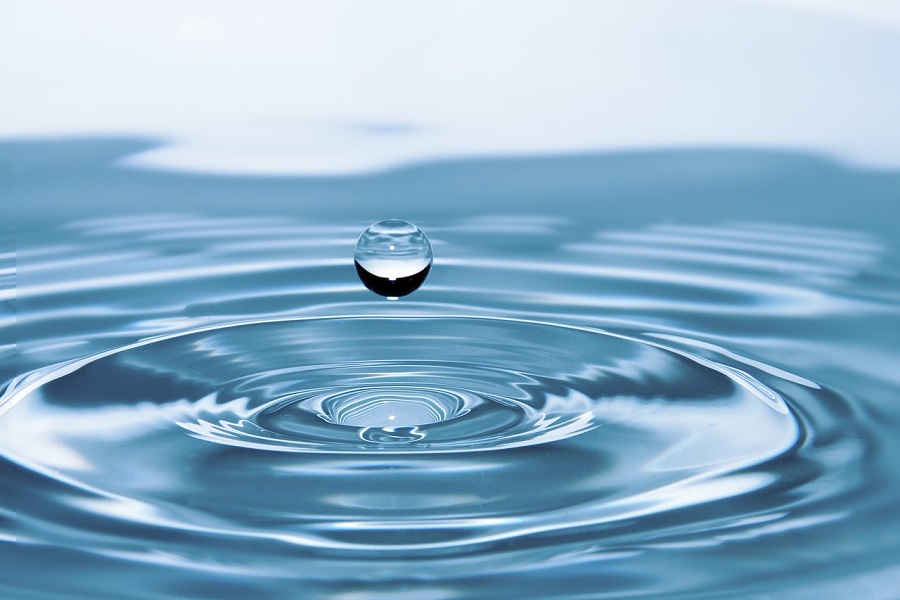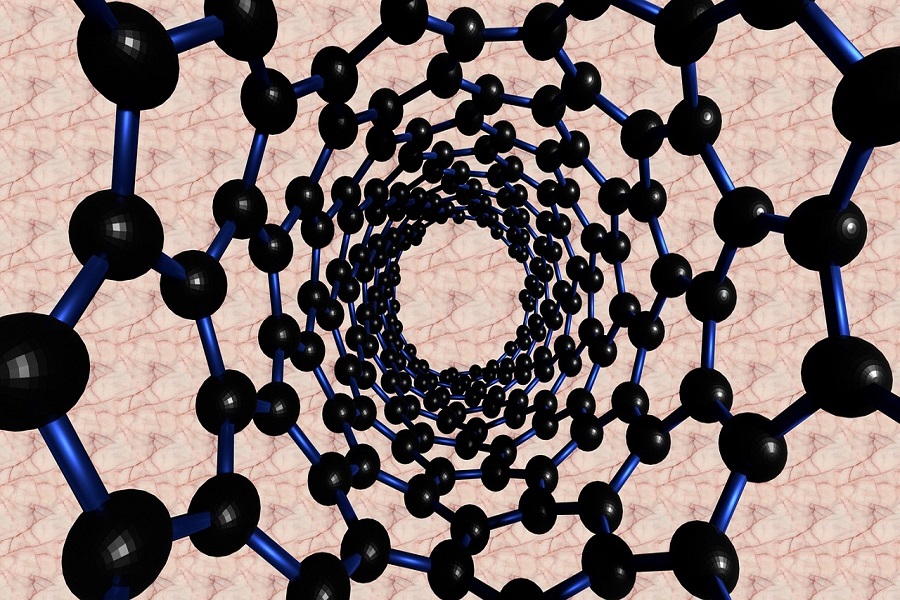INTRODUCTION
Water intended for human consumption must not contain chemicals and microorganisms in quantities that may affect health. It must be safe and harmless to health, not cloudy and free from color and unpleasant odor and taste. It must be safe and harmless to health, not cloudy and free from color and unpleasant odor and taste. The location, construction, operation and supervision of a water intake source (wells, reservoirs, water treatment and distribution) must be such as to exclude any pollution of the water itself. Most countries in the world have established drinking water quality standards that apply to their territory and use similar methods of analysis and expression of results to make comparison between them easy. Also, outbreaks of water-borne diseases can be avoided if strict checks are made by those responsible for the water intake systems and the relevant health authorities, regarding the quality of drinking water. According to the Sanitary Regulation, “drinking water” means water used for human consumption, whether with previous treatment or not, regardless of its origin.
LEGISLATION
The Sanitary Regulation for drinking water, which is valid today (Α5/288/23-1-86 FEK 53/Issue B΄/20-2-86) is harmonized with the 80/778/Directive of the Council of the EEC. It includes 62 parameters classified into five main groups: Organoleptic – Physicochemical – Undesirable – Toxic – Microbiological. For each parameter, an “Indicative Level” (E.E.) and “Maximum Acceptable Concentration” (A.P.S.) are determined. In article 5 paragraph 2 it is stated that the values of the quality parameters of the drinking water must definitely be lower than or equal to the A.P.S. and approach the E.U. Deviations from these values are allowed in exceptional cases (defined in articles 7 and 8 of the Health Ordinance), but without these entailing a risk to Public Health. Annex II specifies the parameters to be taken into account for the controls, as well as the frequency of standard analyses. Article 11 of the Ordinance specifies that the “Competent Authority” for its implementation is the Health Services of the Ministry of Health, Welfare and Social Insurance, which control the “Responsible” for compliance with the terms of the Health Ordinance. “Responsible” for the study, construction, operation, cleaning of water supply systems, monitoring the quality of drinking water and generally for taking measures, which will ensure a normal supply of healthy water on a permanent basis, are defined:
˕ For the water supply of Municipalities and Communities, the respective Organization or Business or Association.
For industries, institutions, etc., that have their own water supply, their legal representatives.
Finally, Annex III defines the analytical reference methods for the determination of the 62 parameters, which are listed in the Health Regulations.
HEALTH SIGNIFICANCE OF CHEMICAL PARAMETERS
If the results of the chemical analyzes in a water exceed the upper acceptable concentrations defined by the Sanitary Regulations, then either the water is deemed unsuitable or measures are taken to clean it (e.g. chlorination, sedimentation, source protection).
A. ORGANIZATIONAL PARAMETERS
Color
If present, it is undesirable for drinking water and there is a possibility that it is due to the presence of pigments in solution, either vegetable from plant roots, tree leaves, or organic or inorganic (salts, iron from corrosion of pipes). The presence of color in water does not mean that it is always dangerous. It must be chemically examined to look for the origin of the color. No permissible limit is proposed for color in drinking water.
Turbidity
It is due to suspended colloidal inorganic or organic matter. Water that is cloudy should be checked for pollution. Suspended solids also settle and create problems in piping and tanks. Drinking cloudy water can be dangerous to health. Disinfection of drinking water is not effective if there is turbidity, because many pathogenic organisms are trapped in suspended particles and protected by the disinfectant. Also the particles can absorb harmful organic or inorganic substances. The drinking
water must be clear when it reaches the consumer.
Odor – Taste
Drinking water must be odorless and tasteless. All waters have their particular taste due to the dissolved salts and dissolved gases they contain. Taste and odor in water is usually not considered important from a health point of view. But it is not desirable in drinking water, because it is usually due to either chemical substances or microorganisms. Water with a strong odor may be contaminated, so it should be investigated to find the cause, especially if there is a sudden change.
B. PHYSICOCHEMICAL PARAMETERS
Temperature
The temperature of the water affects its taste. As the temperature increases, the water is less palatable because the gases dissolved in it are expelled. The most pleasant taste is between 5-15 0C (mainly 9-100C). When the temperature of the water exceeds 150C, any existing microbes multiply. Also, its ability to dissolve gases is reduced, while solubility in solids increases, or biological actions are accelerated. It also increases the amount of chlorine required and favors the growth of algae as a result
appearance of unpleasant odors and tastes.
Conductivity
Conductivity is the numerical expression of the ability of an aqueous solution to conduct electricity. This ability depends on the presence of ions, their total concentration, their valence and individual concentrations, as well as the measurement temperature. Conductivity in water increases with temperature.
Chlorides (Cl)
They are widespread in nature as sodium, potassium and calcium salts. They come from the erosion of rocks. Because they are very mobile and soluble they enter the soil or are transported in closed tanks and the oceans. But they can arise from the use of fertilizers, from sewage and industrial waste or intrusion of sea water in coastal areas. They do not have a harmful effect on the human body, but in high concentrations they give drinking water a sweet taste. A sudden increase in chlorides in the water, if not due to seawater ingress, indicates possible sewage pollution and requires an immediate on-site health inspection. Pollution must also be confirmed by other measurements (microbiological, ammonia, nitrite). Because no toxicity of chlorides has been observed in humans, no maximum level has been established for drinking water.
Calcium (Ca)
It exists in all natural waters and comes from the rocks (limestone, dolomite, gypsum) through which the water passes. The concentration of calcium ranges from zero to a few hundred mg/l depending on the origin of the water and contributes to its total hardness.. It has no negative effects on health.
Magnesium (Mg)
It is abundant in nature (eighth in a row) and is one of the usual components of natural waters. Its salts together with calcium make up the total hardness of the water and when heated form deposits in pipes and boilers. Water with magnesium concentrations greater than 125 mg/l can have laxative and diuretic properties.
Hardness
Hardness expresses the total of dissolved calcium and magnesium salts and depends on the rocks that the water has passed through. It is distinguished between carbonate (or temporary) hardness due to acid carbonate (bicarbonate) salts and non-carbonate (permanent) hardness due to the remaining salts (chlorides, sulfates, nitrates, carbonates). High hardness values do not pose a health risk, on the contrary, a significant correlation has been found between increased hardness and a reduction in cardiovascular diseases. Hardness is also desirable in brewing and baking because it helps enzyme action. Hard water doesn’t taste good, prevents food from boiling well, doesn’t lather with soap, and creates deposits in pipes and household appliances. Also in some industries (tanneries, dyers, chemical and pharmaceutical products) hard water is detrimental to processing and the final product. Water with a hardness of up to 500 mg/l CaCO3 can be used for drinking, but the best values are between 80 and 150.
Sodium (Na)
It is a basic element for humans. Sodium salts are found in all foods and drinking water. Due to its abundance in nature (sixth in order) it is contained in all natural waters in concentrations ranging from 1-500 mg/l. In drinking water, it does not exceed 20 mg/l, except in cases where it has been softened by the ion exchange method in waters with high hardness. At concentrations greater than 200 mg/l, it affects the taste of the water. Sodium (mainly its ratio to other cations in water) is of great importance to agriculture and human pathology. The permeability of the soil is negatively affected by a high proportion of sodium in the water. People with chronic heart disease need water with a low sodium content. There are epidemiological studies that report health effects from high concentrations of sodium in drinking water, but with the existing data it is not possible to draw definite conclusions about the relationship between sodium in water and the creation of hypertension.
Potassium (K)
It is the seventh most abundant element in nature. It is therefore found in all natural waters.. However, rarely does the content of drinking water reach 20 mg/l in potassium. No adverse health effects have been reported.
Dissolved Oxygen
The dissolved oxygen content of the water must be at the saturation point, i.e. 100%, so the water has a pleasant taste. No health effects have been reported directly related to the reduction or lack of dissolved oxygen in drinking water. However, there are some indirect effects: Pipelines corrode, resulting in an increase in the water’s metal content (eg iron, zinc, lead, cadmium). Anaerobic conditions are also created that help the reduction of nitrates to nitrites, sulfates to sulfides, resulting in the creation of unpleasant odors. Dissolved oxygen decreases when water temperature and salinity increase.
C. PARAMETERS CONCERNING UNDESIRABLE SUBSTANCES
Nitrogen compounds (Ammonia – Nitrite – Nitrate)
The determination of the various nitrogen compounds in drinking water is an indicator of the sanitary quality of the water. Before the development of bacteriological assays the measurement of nitrogen compounds in water was the only indicator of possible contamination. In recently polluted waters, nitrogen is found in the form of organic nitrogen and ammonia. As time passes, organic nitrogen is gradually converted into ammonia and later, if aerobic conditions exist, ammonia is oxidized to nitrites and nitrates. Based on the above, waters containing a large amount of organic nitrogen and ammonia are considered to be recently polluted and therefore present a great risk to public health. Waters where the nitrogen is in the form of nitrates means that they have been polluted for some time and therefore do not pose an immediate threat to public health.
Ammonia ( NH3 ).
Groundwater usually contains less than 0.2 mg/l of ammonia. Higher concentrations are observed in forest soils. Ammonia does not directly affect health in the concentrations that may be present in drinking water, but it is an important indicator of faecal pollution. At concentrations greater than 0.2 mg/l, it creates odor and taste problems in water and reduces the effectiveness of disinfection. It also contributes to the formation of nitrites in water systems.
Nitrites ( NO2 ) – Nitrates ( NO3 ).
They are part of the nitrogen cycle in nature, so they are present in natural waters, but the nitrate concentration is usually low. High concentrations are due to fertilizers, litter and animal or human waste. They are even in the air, due to air pollution, so they are washed away by rain or deposited on the ground. In aerobic conditions, nitrates penetrate the water table. Drinking water containing large amounts of nitrates risks causing methemoglobinemia in children, due to their reduction to nitrites. Nitrites and nitrates, in the environment of the stomach, form N-nitroso compounds, which are carcinogenic.
Iron (Fe)
It exists mainly in underground water, which passes through rocks rich in iron salts. Continuous consumption of water with high concentrations of iron can cause tissue damage (hemochromatosis) in humans, and especially in children. Iron gives water a taste that is detectable in very small concentrations. Iron in water causes problems in laundries and looms (stains on fabrics) and in water distribution pipes (facilitates bacterial growth and deposits).
Manganese (Mn)
No adverse health effects have been identified from drinking water containing manganese. It is considered one of the least toxic elements for humans. Its absorption in the body is directly linked to the absorption of iron. High concentrations in water cause an unpleasant taste. Manganese causes fabric stains in washing machines and looms. Facilitates the growth of micro-organisms in the networks resulting in increased turbidity, creation of odors and deposits.
Copper (Cu)
It is a key element in human metabolism. Copper salts are toxic to aquatic plants and are used (mainly copper sulfate) to inhibit algae growth. Due to the corrosion of copper piping, significant amounts of copper are dissolved in drinking water. If the water remains stagnant for 12 hours in the pipes, the copper concentration can exceed 20 m/g. For this reason, the Sanitary Regulation mentions two indicative levels: at the exit of the facilities and after a 12-hour rest in the pipelines. Copper imparts color and an astringent taste to drinking water. Creates stains on fabrics and hygiene items. There is no evidence that it causes damage to health.
Zinc (Zn)
It is an important element for humans and animals. Sources of zinc in water are corrosion of galvanized pipes and waste from mines and smelters. Concentrations greater than 5 m/g impart color and an astringent taste to drinking water. No adverse health effects have been observed.
Phosphorus ( P )
All phosphorus compounds are found in water either dissolved, or as particles or in the body of aquatic organisms. Phosphorus, like nitrogen, is a key element for the growth of algae and its content in water is a determining factor in the eutrophication of surface waters. The largest amount of inorganic phosphorus is due to human sewage and comes from the breakdown of proteins during metabolism. It is also present in many detergents and phosphate fertilizers. Small amounts of phosphates enter the networks from water treatment, where they are used to prevent corrosion in piping and scale in boilers. No health effects have been reported.
Fluoride (F)
Fluoride is found in water as fluoride salts, which come from volcanic rocks. It is usually found in groundwater rather than surface water. It is not found in elemental form in nature because it is very reactive. It is a basic element for humans. From research and epidemiological studies, it was found that fluoride in small amounts in water (up to 1 mg/l) is beneficial, because it prevents the formation of tooth decay, while in larger concentrations it causes fluoridation (black spots on the enamel of the teeth) or bone damage. It is used in aluminum production, steel and glass industries, fertilizers and ceramics. In waters that do not contain fluoride, fluoridation takes place by adding fluoride and fluorosilicate compounds. In these cases, the fluoride content of the water must be checked frequently, so that it does not exceed the permissible limit.
Residual Chlorine
In waters that are chlorinated, residual chlorine must be measured. Its value shows us whether the chlorination performed is sufficient. During chlorination, an amount of chlorine is added to the water sufficient to destroy the pathogenic microbes and to leave free chlorine so that the water inside the pipes is not contaminated. Chlorine gives the water a slight odor and changes its taste. The small amounts of chlorine present in drinking water disappear with the gastric fluid and are therefore harmless to humans. Large amounts of chlorine cause irritation of the mouth and larynx. Water chlorination must be done correctly and systematically monitored, so that only small amounts of chlorine reach consumers.
D. PARAMETERS RELATING TO TOXIC SUBSTANCES
Arsenic ( As )
Most natural waters contain arsenic in concentrations above 5 µg/l. It reaches receivers from mining, since it is present in almost all sulphide minerals, from insecticides and the burning of fossil fuels. Natural sources of arsenic in the environment are volcanic activity and the decomposition of plant organic matter. It is toxic and possibly carcinogenic. The toxicity of arsenic depends on its chemical and physical form, the dose, the time of exposure and the way it is introduced into the human body. It causes damage to the gastric, nervous and respiratory systems and various changes to the skin. Doses between 70 and 180 mg of As are lethal.
Cadmium ( Cd )
It is one of the most toxic metals. It occurs in nature in sulphide minerals with lead and zinc. In natural waters it is mainly found in bottom sediments and suspended particles. In unpolluted waters the concentration of cadmium is below 1 µg/l. Sources of cadmium in water are industrial waste and corrosion of galvanized pipes. High concentrations of cadmium can be found in water systems fed with low pH soft water because these waters are more corrosive and the solubility of cadmium in water depends on pH and hardness. Cadmium attacks the liver, kidneys, spleen and thyroid gland, is deposited in the bones, where it replaces calcium causing ITAI-ITAI disease. It has been found to cause cancer in laboratory animals and some epidemiological studies have linked it to cancer in humans.
Chromium ( Cr)
It exists in the earth’s crust and occurs as trivalent and hexavalent chromium. In waters, salts of hexavalent chromium are mainly found, because they are easily soluble, while it rarely exists as trivalent, because its compounds are insoluble and precipitate. In the atmosphere it is found in aerosols and is washed away by rain or deposited on the ground polluting surface water. The average concentration in rainwater is 0.2 – 1 µg/l, in seawater 0.05 µg/l and in natural waters 0.5 – 2 µg/l, while in undergrounds it is very low. Higher concentrations are due to pollution from industrial waste. It is used in the paint and leather industries, in metallurgical plants, in the manufacture of alloys and catalysts. Chromic compounds are often added to cooling waters to control corrosion. The health effects of chromium depend on its form. Hexavalent chromium is very toxic. It causes damage to the skin and liver and is considered carcinogenic. Trivalent chromium has not been found to cause health damage.
Lead ( Pb )
It is a very toxic metal. Natural waters usually contain up to 5 µg/l of lead. Higher concentrations are due to waste from mines, industries, corrosion of lead plumbing. Large amounts of lead are present in the atmosphere from tetraethyl lead added to gasoline as an antiknock. In most countries it has been abandoned and unleaded petrol is used. It is also used for the production of batteries, alloys, pigments, anti-rust agents. The effects of lead on health were studied many years ago, because there were lead poisonings in drinking water, which came from corrosion of lead plumbing. This resulted in the abandonment of lead water pipes and a ban on the use of lead-based paints for interior decoration. It is a poison with cumulative action. It causes damage to the liver, brain and nervous system.
CONCLUSIONS
Most drinking water quality problems, especially in small communities, result from faecal contamination. Several times, however, serious problems arise from chemical pollution, due to natural or human sources. To investigate these cases, chemical analyzes must be done. However, it would be very expensive and time-consuming to determine many parameters on a continuous basis, especially in water bodies with small populations. For this reason, the parameters recommended for monitoring the quality of drinking water are those that will determine the hygiene and safety of the water supply system. The Sanitary Regulation mentions the following parameters, which must be taken into account for the controls:
♦ Minimum control, E1 includes: Odor, Taste, Conductivity, Residual chlorine, Microbiological
♦ Routine Control, E2 includes: Odor, Taste, Turbidity, Conductivity, pH, Residual Chlorine, Nitrates, Nitrites, Ammonia, Microbiological
♦ Periodic control, E3 includes: E2 and other parameters.
♦ Emergency control, E4 is done in special cases or accidents. The competent authority determines the parameters depending on the circumstances. Before starting to exploit a power source, it is advisable to make a general analysis ( first examination ). The parameters to be measured will be those of routine control, to which various toxic or undesirable substances could be added, depending on the location of the source, the type of soil and the pollution from industrial wastes.








